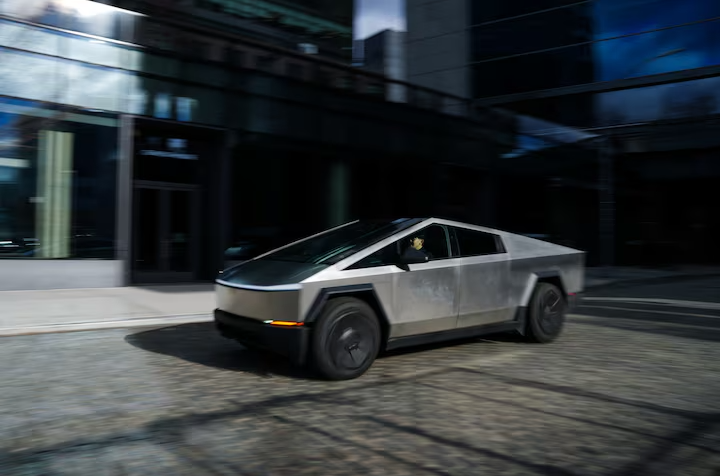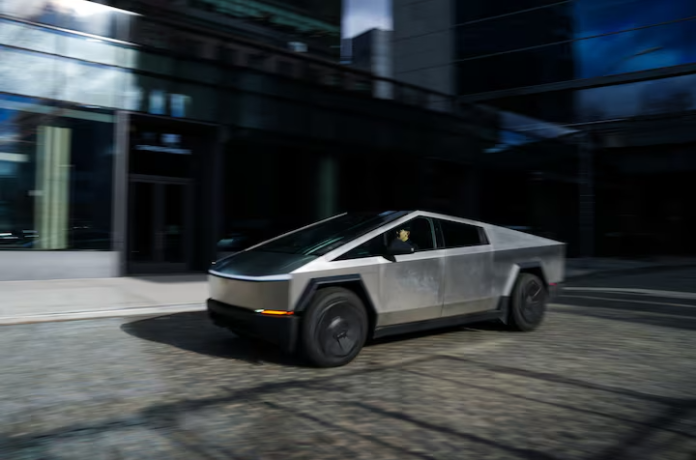A recent crash involving Tesla’s new Cybertruck while in Full Self-Driving (FSD) mode has reignited concerns about the safety and reliability of the company’s autonomous driving software. The accident, which occurred in Reno, Nevada, comes just days after CEO Elon Musk announced plans to launch a paid robotaxi service later this year.
What Happened?
The Cybertruck reportedly failed to merge out of a lane that was ending, striking a curb before crashing into a pole. The driver, Jonathan Challinger, took to social media to warn others, urging Tesla owners to remain vigilant despite the convenience of self-driving features.
“Don’t make the same mistake I did. Pay attention. It is easy to get complacent now—don’t,” Challinger posted on X (formerly Twitter), tagging Musk. “Spread my message and help save others from the same fate or far worse.”
According to a police report seen by Reuters, the driver mentioned experiencing unknown mechanical issues before the crash. However, Tesla has not issued an official response regarding the incident.
Renewed Concerns About Tesla’s Self-Driving Technology
Tesla’s self-driving technology has long been under scrutiny due to multiple crashes, including fatal ones, linked to its advanced driver assistance software. While Musk recently praised the latest FSD Version 13 for its “immense improvement,” experts argue that the technology is still far from perfect.
Professor Saber Fallah, an expert in AI and autonomous systems at the University of Surrey, warned that Tesla’s software still struggles with complex driving scenarios.
“Lane endings, merges, and sudden road layout changes remain problematic for AI-driven systems, which lack the cognitive adaptability of human drivers,” Fallah explained.
Unlike other automakers that incorporate multiple redundant technologies for safety, Tesla relies solely on cameras for navigation. While this approach reduces costs, experts say it increases risks in challenging visibility conditions such as heavy rain, fog, or nighttime driving.
How This Affects Tesla’s Robotaxi Ambitions
Despite ongoing safety concerns, Musk has announced that Tesla will begin testing its paid robotaxi service in June, starting in Austin, Texas—a state with minimal regulations for autonomous vehicles. The service is expected to expand to California and other regions by the end of the year.
Tesla is betting big on autonomous driving to fuel its future growth, especially as demand for its current electric vehicle lineup slows. However, if high-profile crashes like this continue, they could impact consumer trust and regulatory approvals, delaying the rollout of self-driving taxis.
Is Tesla’s FSD Ready for Full Autonomy?

Tesla researcher and analyst Troy Teslike, who closely tracks the company’s technology, believes this accident highlights major flaws in FSD’s capabilities.
“The accident shows there are problems with FSD’s nighttime detection abilities, data mapping, and vision-only approach,” Teslike noted on X. “FSD doesn’t seem ready for driverless operation yet.”
With growing concerns about safety, Tesla may need to refine its autonomous technology further before it can confidently remove the human driver from the equation. Until then, Tesla owners are advised to remain alert and treat FSD as an assistance tool rather than a fully autonomous system.
Final Thoughts
The Tesla Cybertruck crash serves as a stark reminder that despite advances in AI-driven transportation, self-driving technology is still a work in progress. While Tesla continues to push for a future where autonomous vehicles dominate the roads, safety remains a significant hurdle that must be addressed before mass adoption can become a reality.



